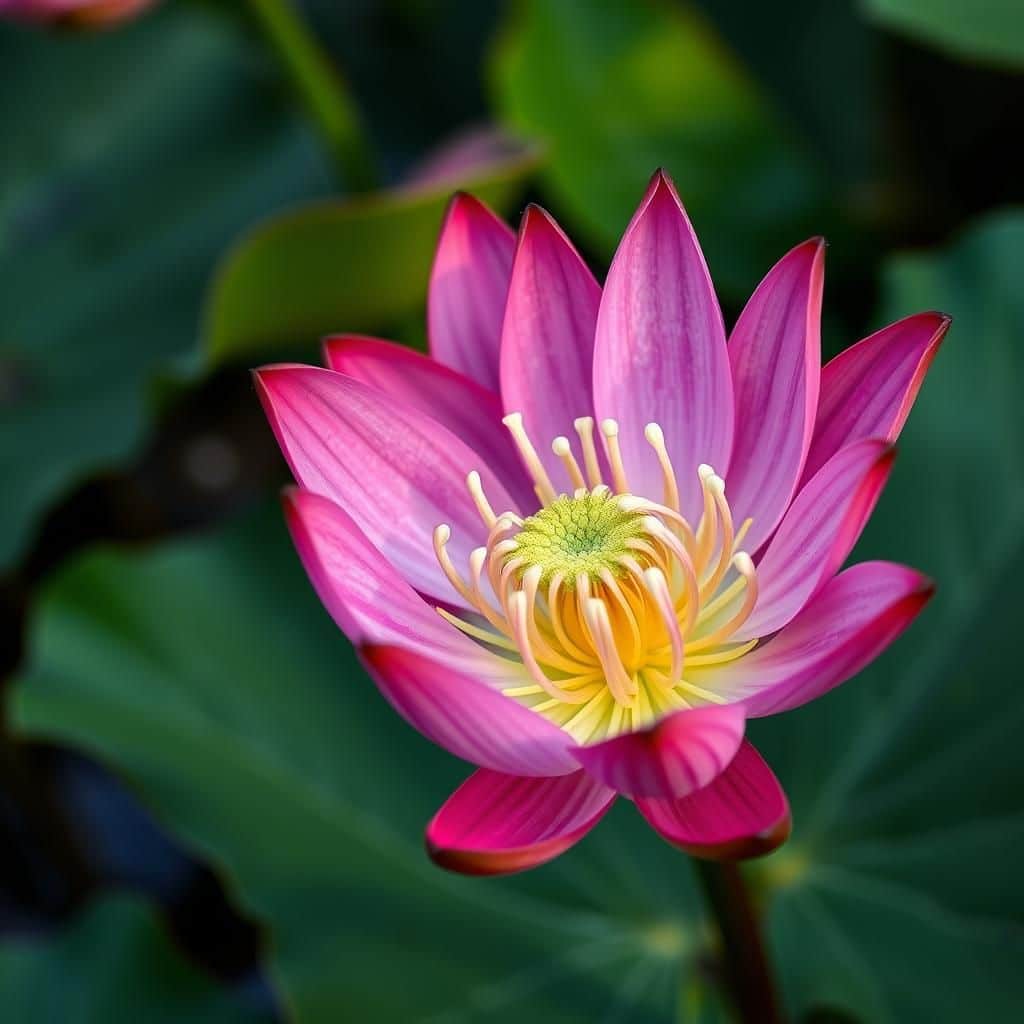How Often to Water Lilly Pilly: Essential Tips for Optimal Growth

Lilly Pilly plants, renowned for their vibrant foliage and resilient nature, thrive in various climates, making them a popular choice for gardens and landscapes. However, understanding how often to water these plants is crucial for their optimal growth and health. Over- or under-watering can significantly impact their development, leading to issues such as root rot or stunted growth. In this article, we will explore essential tips and guidelines to help you determine the ideal watering frequency for your Lilly Pilly, ensuring lush, thriving plants that enhance your outdoor space. Proper watering practices will set the foundation for a flourishing garden.
How Often to Water Lilly Pilly
Watering your lilly pilly tree appropriately is crucial for its health and growth. Typically, these plants require consistent moisture, especially during their establishment phase, which typically lasts for the first few months after planting. Once established, watering can be reduced, but it’s still essential to ensure they receive water regularly during dry spells or hot weather. A good rule of thumb is to check the soil moisture at a depth of about two inches; if it feels dry at this depth, it’s time to water. In general, lilly pillies prefer their soil to be moist but never waterlogged, which means you should aim to provide water about once every week to ten days depending on the weather conditions.
Watering Frequency During Establishment
During the first few months of planting, it’s important to water your lilly pilly regularly, ideally once or twice a week. This frequency helps the roots get established and prevents stress on the plant. The soil should be kept consistently moist but not soggy. Utilize a soaker hose or drip irrigation to provide even moisture without flooding, which can lead to root rot.
Watering in Different Seasons
In the spring and summer, the lilly pilly will likely need more water due to the increased temperatures and evaporation rates. It’s recommended to check the soil more frequently, ensuring it retains adequate moisture. In contrast, during the cooler months of fall and winter, the watering frequency can typically be reduced since the plant enters a dormant phase and requires less moisture.
Signs of Overwatering and Underwatering
Understanding the signs of both overwatering and underwatering is crucial for maintaining your lilly pilly’s health. If the leaves start to turn yellow or drop, it might indicate too much water, whereas if the leaves appear dry and crispy, your plant may be suffering from underwatering. Monitoring these signs periodically can help you adjust your watering practices accordingly.
Ideal Soil Conditions for Lilly Pilly
Lilly pillies thrive in well-drained soil that retains some moisture but does not become waterlogged. Using a mix of compost and sandy loam can enhance drainage while providing essential nutrients. Good soil health not only facilitates better water retention but also promotes deeper root growth, thereby reducing the need for frequent watering.
Using Mulch to Retain Moisture
Applying a layer of mulch around the base of your lilly pilly can be beneficial in conserving soil moisture, especially during the hotter months. Mulch helps by regulating soil temperature, reducing evaporation rates, and preventing weed growth. A layer of organic mulch, such as wood chips or straw, can be an excellent addition to your plant care routine, thus potentially extending the time between watering sessions.
| Condition | Watering Action |
|---|---|
| Soil Dry (2 inches down) | Water every 7-10 days |
| Overwatered (yellow leaves) | Reduce watering frequency |
| Underwatered (crispy leaves) | Increase watering to regular schedule |
| Spring/Summer | Check soil moisture > 1 time/week |
| Fall/Winter | Check soil moisture < 1 time every 2 weeks |
How do you know if you are overwatering Lilly Pilly?

To determine if you are overwatering your Lilly Pilly (Syzygium spp.), it's essential to observe several signs and symptoms that indicate excess moisture in the soil. Overwatering can lead to root rot, nutrient deficiencies, and other health issues for your plant. Here are the key indicators and factors to consider when assessing the watering habits of your Lilly Pilly.
Signs of Overwatered Lilly Pilly
The primary signs of an overwatered Lilly Pilly can be fairly obvious if you know what to look for. These include:
- Wilting Leaves: Despite having enough water in the soil, the leaves may appear limp or droop.
- Yellowing Foliage: A common manifestation of overwatering is the yellowing of leaves, which occurs due to poor root health.
- Leaf Drop: Excessive water can stress the plant, leading to premature leaf drop.
Soil Moisture Assessment
Checking the moisture level in the soil is critical for understanding whether your Lilly Pilly is overwatered. The following methods can be effective:
- Finger Test: Poke your finger about an inch into the soil. If it feels wet, hold off on watering.
- Soil Moisture Meter: Using a soil moisture meter gives a precise reading of the soil's hydration level.
- Soil Consistency: Overly saturated soil may feel mushy or have an unusual smell compared to healthy, well-drained soil.
Root Health Evaluation
Examining the roots of the Lilly Pilly can unveil the effects of overwatering. Here’s what to look for:
- Brown or Black Roots: Healthy roots are usually white or light tan; dark roots are often a sign of rot.
- Soft Root Texture: When roots turn mushy, they are likely affected by fungal pathogens due to excess moisture.
- Foul Odor: A strong, unpleasant smell can indicate decaying roots, often related to overwatering.
Environmental Factors
Several environmental conditions can contribute to overwatering issues with Lilly Pilly. These include:
See also:
- Humidity Levels: High humidity can slow down the evaporation of moisture, leading to soggy conditions.
- Drainage Issues: Poorly draining pots or heavy soils can prevent water from escaping.
- Temperature Variations: Cooler weather can reduce evaporation, so plants can stay wetter for longer.
Overall Plant Health
Monitoring the overall health of your Lilly Pilly can help identify problems early. Signs to watch include:
- Slow Growth: Overwatering can stunt growth, making it difficult for the plant to thrive.
- Increased Pest Activity: Overly wet conditions can attract pests like fungus gnats.
- Integration Issues: If your Lilly Pilly struggles to integrate new growth or flowers, it could indicate a problem.
Do Lilly Pillies like a lot of water?

Lilly Pillies, scientifically known as Syzygium, are popular ornamental plants that are often used in landscaping for their lush foliage and colorful berries. When it comes to their watering needs, Lilly Pillies do require a moderate amount of water, but not excessive amounts. It is essential to strike a balance; too much water can lead to root rot, while too little can stress the plant.
Watering Frequency
Lilly Pillies require regular watering, especially during their establishment period. The frequency can depend on several factors:
- Soil Type: Sandy soils drain quickly and may need more frequent watering.
- Climate: Hotter climates may require more regular watering compared to cooler ones.
- Season: During summer months, the plants may need watering more often than in the winter.
Signs of Overwatering
Identifying the signs of overwatering is crucial to maintain the health of Lilly Pillies. Key indicators include:
- Yellowing Leaves: Notably, leaves may turn yellow and drop off if overwatered.
- Wilting: Paradoxically, plants can wilt due to disturbed root systems.
- Root Rot: A serious condition that can lead to plant death if not addressed promptly.
Ideal Soil Conditions
The soil conditions are vital for the health of Lilly Pillies, affecting their water needs. Consider the following factors:
- Well-Draining Soil: Ensures excess water does not remain around the roots.
- Organic Matter: Incorporating compost improves water retention without sogginess.
- pH Levels: A slightly acidic to neutral soil pH helps in optimal nutrient absorption.
Mulching Benefits
Applying mulch around the base of Lilly Pillies can greatly influence their watering needs. Key benefits include:
- Moisture Retention: Helps to keep the soil moisture level consistent.
- Weed Suppression: Less competition for water and nutrients from weeds.
- Temperature Regulation: Maintains soil temperature, aiding root health.
Watering Techniques
Using the right techniques for watering can significantly affect the growth of Lilly Pillies. Some effective methods are:
- Deep Watering: Encourages deep root growth and resilience against drought.
- Drip Irrigation: Provides consistent moisture directly to the roots.
- Watering Early Morning: Minimizes evaporation and supports plant uptake of water.
How to make Lilly Pilly grow thick?

To make Lilly Pilly grow thick, there are several effective strategies you can implement. Here are some important steps to consider for encouraging a dense and lush growth of this beautiful plant.
Soil Preparation
Proper soil preparation is crucial for achieving a thick growth in Lilly Pilly. Start by ensuring that the soil has good drainage and is rich in nutrients.
- Test your soil's pH; Lilly Pillies prefer a slightly acidic to neutral pH (around 6.0 to 7.0).
- Add organic matter such as well-rotted manure or compost to improve soil fertility.
- Make sure the soil is loose and aerated, allowing roots to grow freely.
Watering Techniques
Consistent and appropriate watering practices significantly impact the growth rate and health of Lilly Pilly plants.
- Water deeply but infrequently to encourage deep root growth.
- Ensure the plants do not sit in water to prevent root rot; aim for well-drained soil.
- Use mulch around the base of the plant to maintain soil moisture and regulate temperature.
Fertilization Schedule
Feeding your Lilly Pilly plants with the right fertilizers can enhance their growth and abundance.
See also:
- Use a slow-release, balanced fertilizer during the growing season to provide necessary nutrients.
- Avoid over-fertilizing, as this can lead to leggy growth instead of thick foliage.
- Incorporate organic fertilizers like fish emulsion or seaweed extract for additional benefits.
Pruning Techniques
Regular pruning helps to achieve a thicker canopy in Lilly Pilly plants.
- Trim back the tips of branches to promote branching and bushier growth.
- Remove any dead or crossing branches to improve air circulation and light penetration.
- Prune during the growing season for best results; this encourages rejuvenation of the plant.
Environmental Conditions
The right environment plays a pivotal role in how well your Lilly Pilly grows.
- Choose a location that receives full sun to partial shade, as Lilly Pilly thrives in warm conditions.
- Protect young plants from harsh winds and frost, which can hinder growth and thickness.
- Regularly monitor for pests and diseases, as these can affect overall health and growth.
Why is my Lilly Pilly suddenly dying?
Your Lilly Pilly may be experiencing sudden decline due to various factors, including environmental stress, pest infestations, or diseases. Understanding the specific conditions affecting your plant can help diagnose the problem effectively. Here are some reasons why your Lilly Pilly might be dying:
Environmental Stress
Environmental stress can severely impact the health of your Lilly Pilly. Changes in temperature, humidity, or soil conditions may lead to stress reactions. Key factors include:
- Watering Issues: Both overwatering and underwatering can lead to root rot or desiccation.
- Sunlight Exposure: Insufficient sunlight or extreme sunlight can affect foliage and overall health.
- Soil Quality: Poor soil quality may prevent adequate nutrients from reaching the roots.
Pest Infestations
Pests can be a significant threat to the well-being of your Lilly Pilly. Common pests affecting this plant include:
- Scale Insects: These pests can suck sap from your plant, weakening it over time.
- Aphids: Aphids can also drain vital nutrients, causing stunted growth and yellowing leaves.
- Spider Mites: These tiny pests may cause leaf damage, resulting in dots or fading color.
Diseases
Fungal and bacterial infections can cause deterioration in plant health. Notable diseases include:
- Phytophthora Root Rot: This is usually caused by overwatering and poor drainage, leading to rot.
- Leaf Spot: Fungal infections can appear as spots on the leaves, often spreading quickly.
- Blackened Bark: This can result from bacterial infections affecting the stem and bark.
Nutrient Deficiencies
If your Lilly Pilly is lacking essential nutrients, it may exhibit signs of distress. Common deficiencies include:
- Nitrogen Deficiency: This often leads to yellowing leaves and stunted growth.
- Iron Deficiency: Symptoms may include chlorosis, where the leaves turn yellow between the veins.
- Calcium Deficiency: This can result in dieback or distorted new growth and leaf edges.
Improper Pruning
Improper pruning can affect the health and shape of your Lilly Pilly. Key issues include:
- Over-Pruning: Removing too much foliage can stress the plant and hinder recovery.
- Timing of Pruning: Pruning at the wrong time of year can expose the plant to diseases.
- Tools Used: Using unclean tools can transfer pathogens to the plant when cutting.
Questions from Our Readers
How often should I water my lily pilly?
To keep your lily pilly healthy, you should water it regularly, especially during hot and dry periods. Typically, once a week is sufficient, but you may need to adjust based on weather conditions, soil type, and the age of the plant.
What are the signs that my lily pilly needs more water?
If your lily pilly shows wilted leaves, brown tips, or slow growth, these can be signs that it requires more water. Additionally, if the soil feels extremely dry to the touch, it’s time to increase your watering frequency.
Can I overwater my lily pilly?
Yes, overwatering can lead to root rot and other issues in lily pillies. It's important to ensure that the plant's soil has proper drainage and to let the top inch of soil dry out before watering again.
Does the watering frequency change with the seasons?
Absolutely, the watering frequency for lily pillies can change with the seasons. During the hot summer months, they may need more frequent watering, while in cooler, wetter seasons, you can reduce the amount of water to prevent over saturation.
See also:

If you want to read more articles like How Often to Water Lilly Pilly: Essential Tips for Optimal Growth, we recommend you check out our Shrubs category.
Leave a Reply

Related Articles